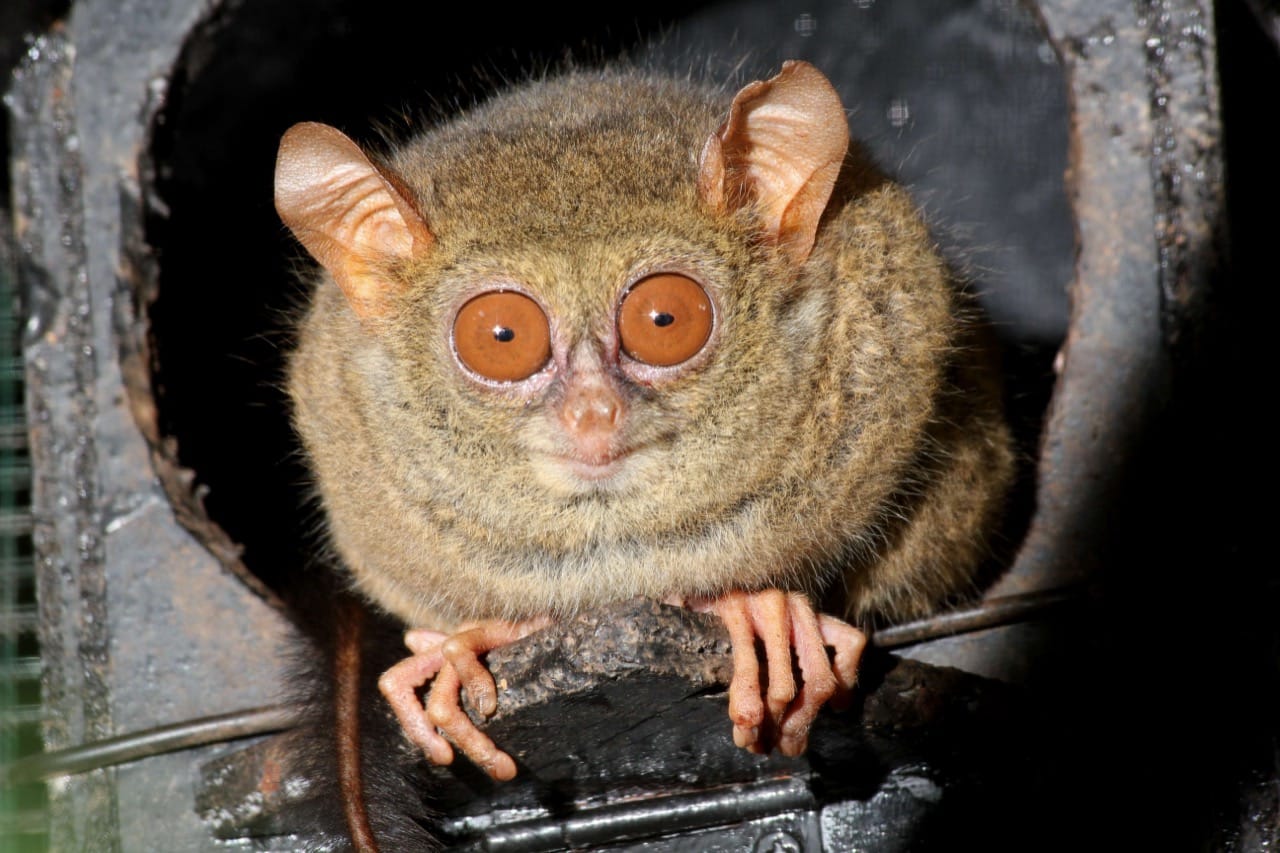Encounter the Philippine tarsier, a creature as mysterious as it is mesmerizing. Nestled deep in the heart of Southeast Asia’s forest canopies, the Philippine tarsier (Tarsius syrichta) captures the imagination with its otherworldly appearance and secretive lifestyle. Often regarded as a ‘living fossil,’ this tiny primate offers a glimpse into the ancient past of mammalian evolution, making it an endlessly fascinating subject for both scientific study and wildlife enthusiasts.
Characteristics / Physical Description
The Philippine tarsier is a marvel of evolution, perfectly adapted to its arboreal lifestyle. With a body size no larger than an adult’s hand, typically measuring about 85 to 160 mm in height, it is one of the smallest primates. What stands out most are its enormous, orb-like eyes, each of which is as large as its brain. These large eyes are crucial for its nocturnal vision. The tarsier’s fur is a soft, velvety grey or brown, providing excellent camouflage against the bark and leaves of its environment. Its elongated tarsal bones, the namesake of tarsiers, enable it to make breathtaking leaps from tree to tree.
Taxonomy and Classification
Tarsius syrichta belongs to the family Tarsiidae, which comprises several species of small primates found across Southeast Asia. The genus Tarsius is a pivotal group in primate evolutionary history, representing a branch that diverged early from other primates. This lineage dates back to at least 45 million years, making tarsiers quite distinct from other primate groups such as monkeys and apes.
Behavior and Social Structure
Philippine tarsiers are primarily solitary creatures. They mark their territories with scent and defend them vigorously. Communication occurs through a series of high-pitched sounds that are often inaudible to human ears, along with subtle body movements. During the day, tarsiers rest in thick vegetation or tree hollows, emerging at dusk to hunt.
Habitat and Distribution
This species is endemic to the Philippines, found in several islands including Bohol, Samar, Leyte, and Mindanao. Their preferred habitat is dense, low-level vegetation in tropical rainforests, often near rivers. Sadly, these habitats are under threat from extensive logging and land conversion for agriculture.
Diet and Feeding Habits
Tarsiers are carnivorous, primarily consuming insects, spiders, small crustaceans, and occasionally small vertebrates like birds and snakes. Their hunting method is unique; they remain motionless, watching with their large eyes until they leap with precision to snatch their prey.
Breeding and Reproduction
Breeding can occur at any time of the year, with females giving birth to a single offspring after a gestation period of about six months. The infants are born well-developed and are able to climb within a day of birth. Maternal care is critical as the mother provides nourishment and protection until the young can fend for themselves.
Relationship with Humans
Historically, tarsiers have faced challenges from human activity. Their habitats are diminishing due to deforestation, and they are sometimes captured for the pet trade. Efforts are being undertaken to protect these creatures through legislation and the establishment of sanctuaries.
Evolutionary History
The evolutionary trajectory of tarsiers is significant as it provides insights into the adaptive innovations of early primates. Their morphological and behavioral traits suggest a long period of specialized nocturnal life, which has been key to their survival in dense forest ecosystems.
Use as Research Animals
While not commonly used as research animals, tarsiers contribute to the broader understanding of primate biology and the evolutionary history of mammals. Studies on their unique auditory and visual systems help scientists understand sensory adaptation in nocturnal animals.
In conclusion, the Philippine tarsier is not just a symbol of ancient lineage and evolutionary persistence but also a testament to the intricate balance of our planet’s ecosystems. Preserving such species is crucial for maintaining biodiversity and ecological integrity.

